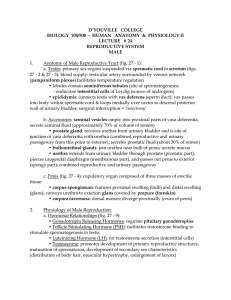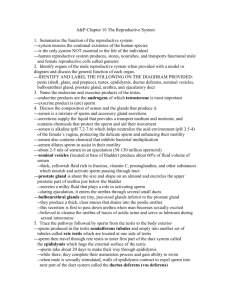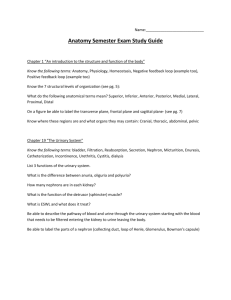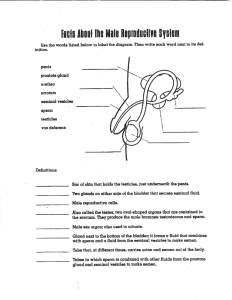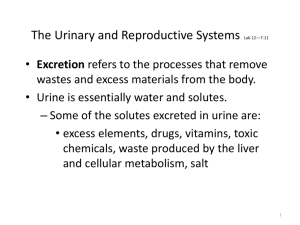Basic Anatomy
advertisement
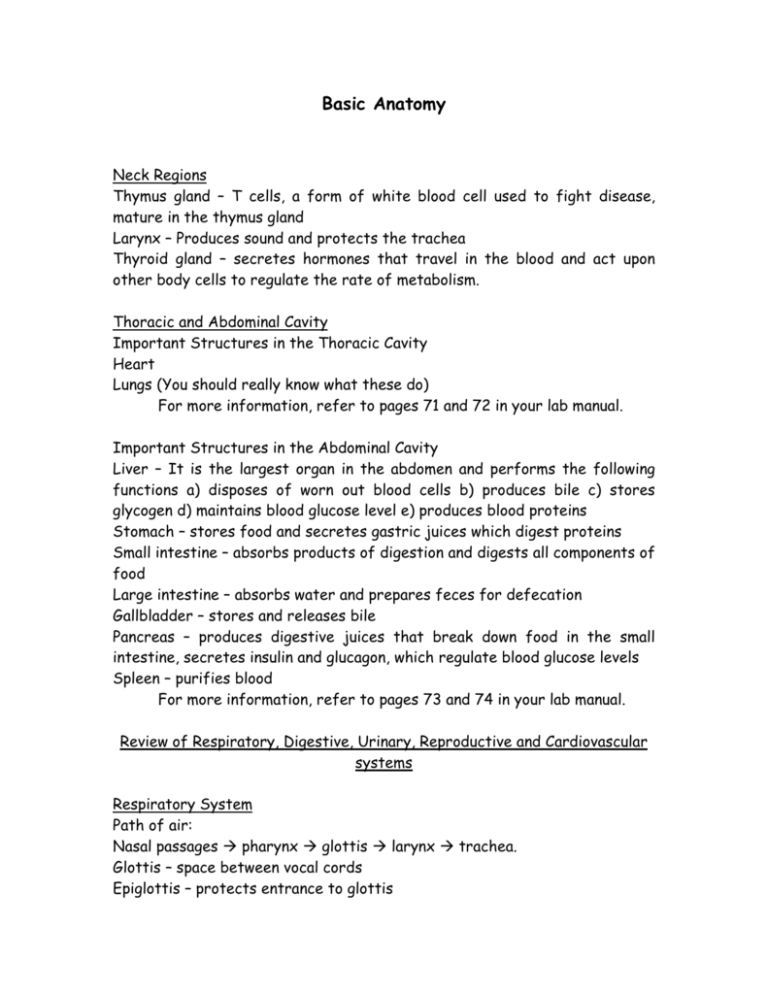
Basic Anatomy Neck Regions Thymus gland – T cells, a form of white blood cell used to fight disease, mature in the thymus gland Larynx – Produces sound and protects the trachea Thyroid gland – secretes hormones that travel in the blood and act upon other body cells to regulate the rate of metabolism. Thoracic and Abdominal Cavity Important Structures in the Thoracic Cavity Heart Lungs (You should really know what these do) For more information, refer to pages 71 and 72 in your lab manual. Important Structures in the Abdominal Cavity Liver – It is the largest organ in the abdomen and performs the following functions a) disposes of worn out blood cells b) produces bile c) stores glycogen d) maintains blood glucose level e) produces blood proteins Stomach – stores food and secretes gastric juices which digest proteins Small intestine – absorbs products of digestion and digests all components of food Large intestine – absorbs water and prepares feces for defecation Gallbladder – stores and releases bile Pancreas – produces digestive juices that break down food in the small intestine, secretes insulin and glucagon, which regulate blood glucose levels Spleen – purifies blood For more information, refer to pages 73 and 74 in your lab manual. Review of Respiratory, Digestive, Urinary, Reproductive and Cardiovascular systems Respiratory System Path of air: Nasal passages pharynx glottis larynx trachea. Glottis – space between vocal cords Epiglottis – protects entrance to glottis Larynx – voice box Trachea – takes air to lungs Digestive System Small intestine Path of food: mouth esophagus stomach duodenum jejunum ileum Large intestine cecum colon rectum anus. Cardiovascular System Path of blood through the heart – vena cava right atrium AV valve right ventricle semilunar valve pulmonary artery lungs pulmonary vein left atrium AV valve left ventricle semilunar valve aorta Urinary System Structures of the Urinary System Kidneys – produce urine Ureters – transport urine to the urinary bladder Urinary bladder – stores urine Urethra – transports urine out of the body For more information, refer to pages 118 and 119 in your lab manual. Reproductive System Male Reproductive Structures Testes – produce sperm and sex hormones Epididymis – stores maturing sperm Vas deferens – conducts and stores sperm Seminal vesicle – contributes fluid to semen Prostate gland – contributes secretions to semen Urethra – conducts sperm Bulbourethral glands – contributes mucoid fluid to semen Penis – organ of copulation Female Reproductive Structures Ovary – produces egg and sex hormones Oviduct – conducts egg towards uterus Uterus – houses developing fetus Vagina – birth canal Comparison of Male and Female Reproductive Structures Male Gonad Testes Duct from gonad Vas Deferens Structure connected to gonad by duct Urethra Copulatory organ Penis Female Ovaries Oviduct Uterus Vagina For more information, refer to pages 121 – 130 in your lab manual. Human Anatomy Be able to relate the location of organs within the rat to the location of the same organs within a human. Refer to models in the lab, pictures in your lab manual (p.64) and the above information.


